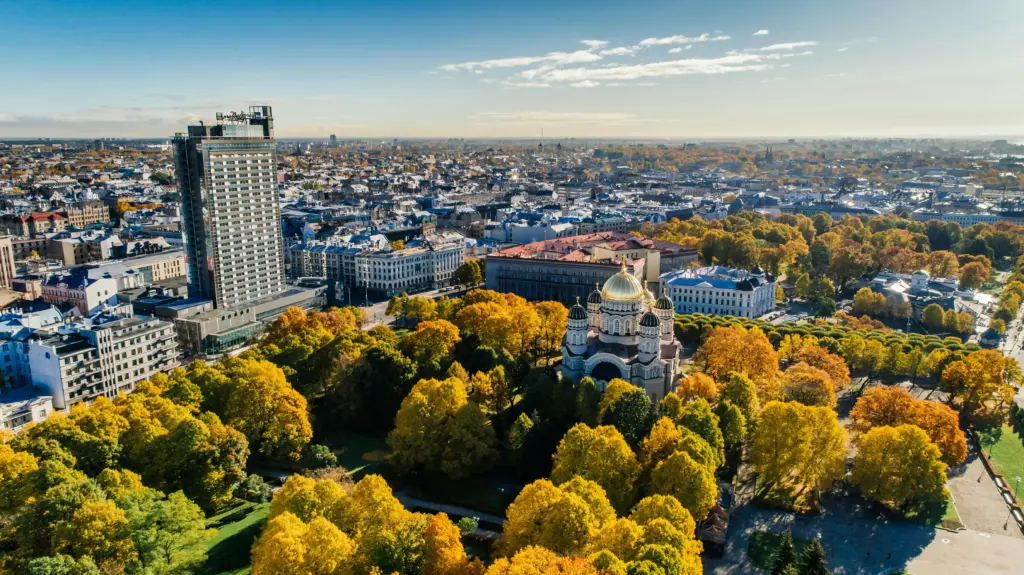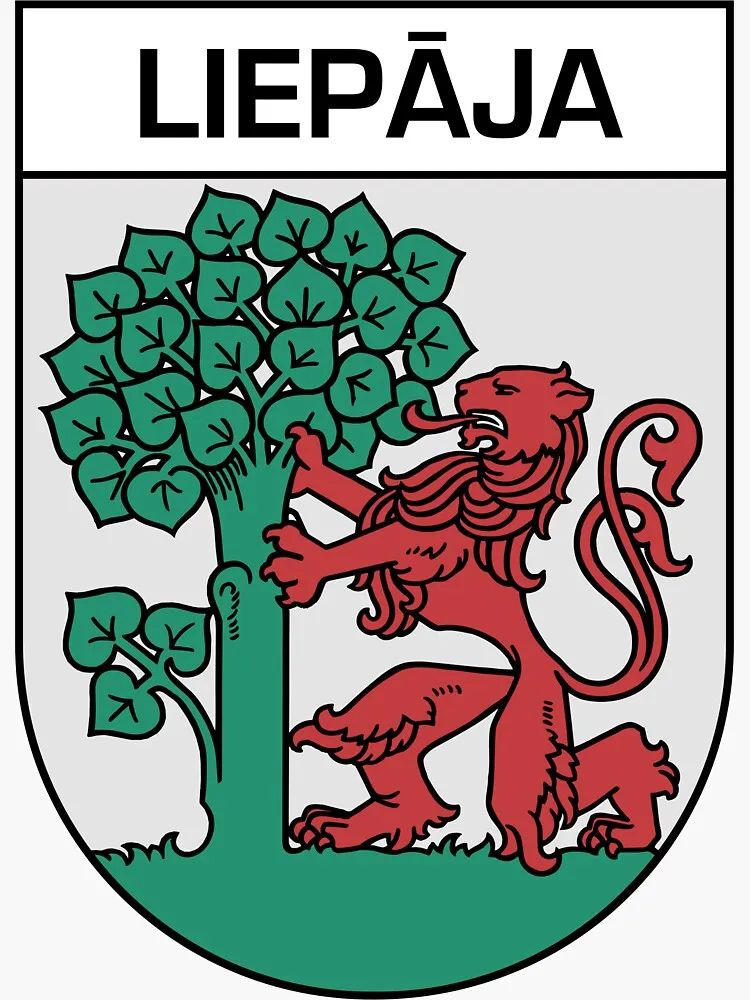Liepāja.
Challenge
How can the CO2 levels of vehicles entering and leaving a specific urban area be monitored by using licence plates for identification and integrating them with a digital twin?
CURRENT SITUATION
In Liepaja, Latvia – one of the EU 100 climate-neutral and smart cities – the primary challenge is addressing CO2 emissions stemming from private transport, which contributes to a significant 46% of the city’s overall emissions [1]. The existing data gathering system, especially for transport emissions, is not as efficient as needed. This inefficiency hinders the city’s ability to precisely monitor and manage emissions from individual vehicles. This inadequacy poses a challenge to the city’s capability to accurately monitor and control emissions originating from individual vehicles. Presently, information on transport emissions is gathered through a cumbersome process involving fuel stations. The municipality writes official letters to these stations, waits for the response regarding fuel consumption data, and subsequently provides the obtained information to experts who convert energy data into emissions. Finally, these data are combined to generate graphics for a comprehensive overview. This intricate and time-consuming procedure underscores the pressing need for a more streamlined and efficient data collection mechanism.
Despite having a traffic monitoring system in place with features such as facilitating “green waves,” monitoring intersection occupancy, detecting the presence of vehicles, remote control of traffic lights, vehicle counting, pedestrian detection through thermo detectors, red light violation detection, transport classification, and capabilities to receive warnings about errors in traffic lights, there remains a key challenge in integrating these functionalities for effective emission control. The current systems operate independently, and while they offer valuable insights into traffic patterns and violations, a cohesive integration is necessary to leverage this data comprehensively for real-time emission monitoring and control. Applicants are encouraged to propose solutions that bridge the existing gaps and enhance the synergy among these features for a more robust and integrated emission control system.
Considering these factors, the goal is to enhance the current traffic control and monitoring infrastructure to specifically target and address CO2 emissions from road transport. Despite the current absence of extensive cameras and sensors in the city’s infrastructure, there is an opportunity to develop a more efficient and comprehensive data gathering system by strategically integrating new surveillance technologies.
Expected to-be situation
The proposed solution should involve the integration of advanced license plate recognition technology into the traffic control infrastructure. This technology, combined with data analytics capabilities, would enable the identification and tracking of vehicles entering and exiting specific zones and afterwards also the whole city. By focusing on road transport, the city can strategically address the major source of CO2 emissions.
Furthermore, the system could be designed to categorise vehicles based on their emission profiles, providing valuable insights for formulating targeted policies. With the possibility of mandatory low-emission zones in cities post-2030, Liepaja could proactively position itself by implementing a robust monitoring system that aligns with future regulatory requirements.
The development of such a system not only addresses the current inefficiencies in data gathering for transport emissions but also positions Liepaja as a city at the forefront of sustainable urban planning. It sets the groundwork for proactive emission management, aligning with global trends toward environmental awareness and low-emission zones.
How success could be measured with measurable KPIs:
- Enhanced data accuracy. The implementation of an advanced monitoring system will have a substantial improvement in data accuracy compared to the existing system. Achieving a 95% [2] accuracy rate in identifying and categorising vehicles would be a measurable KPI.
- Strategic car reduction. The goal is a reduction in the overall number of vehicles entering the city, particularly a decrease in the presence of high-emission cars. Achieving success entails a notable decline in both the total volume of cars and the proportion of high-emission vehicles (needs to be calculated existing situation and then set targets), targeting a 15,000 car [3] reduction by year 2030 comparing to year 2022.
- Efficient traffic management. The success of the project can be measured by improvements in traffic flow and congestion reduction. KPIs may include a 15% [4] decrease in average commute times [5] and a 50% reduction in traffic-related incidents by year 2030 comparing to year 2020 [6].
- Public awareness, engagement, and visual feedback. Success is also reflected in heightened public awareness and engagement regarding emissions. A measurable KPI would be a slight increase in public participation in eco-friendly transportation initiatives and awareness campaigns. Additionally, implementing a visual feedback solution to drivers, such as a display indicating the environmental impact of their vehicle, aims to further raise awareness. Success would be indicated by a slight increase in drivers opting for eco-friendly behaviours after being visually informed about their vehicle’s carbon footprint (Liepaja, in collaboration with the Dienvidkurzeme region, is actively working on the development of a Sustainable Urban Mobility Plan (SUMP) and will assess the significance of public participation in eco-friendly transportation initiatives and awareness campaigns [7]). This not only encourages immediate changes in behaviour but also has the potential to influence the next generation, as the information is visible to drivers’ children as well.
- Considering these factors, the goal is to enhance the current traffic control and monitoring infrastructure to specifically target and address CO2 emissions from road transport. Despite the current absence of extensive cameras and sensors in the city’s infrastructure, there is an opportunity to develop a more efficient and comprehensive data gathering system by strategically integrating new surveillance technologies.
- Reduced private transport emissions. Success would be reflected in a noticeable decrease in CO2 emissions from private transport within Liepaja city, with a target reduction of 73% till year 2030 comparing to year 2006 [8].
References
[1] https://www.liepaja.lv/dokumenti/liepajas-pilsetas-ilgtspejigas-energetikas-un-klimata-ricibas-plans/
[2] Zhang, Bailing & Zhou, Yifan & Pan, Hao. (2013). Vehicle Classification with Confidence by Classified Vector Quantization. Intelligent Transportation Systems Magazine, IEEE. 5. 8-20. 10.1109/MITS.2013.2245725.
[3] https://www.liepaja.lv/dokumenti/liepajas-pilsetas-ilgtspejigas-energetikas-un-klimata-ricibas-plans/
[4] https://www.numbeo.com/quality-of-life/rankings_by_country.jsp?title=2020&displayColumn=6®ion=150
[5] https://ec.europa.eu/eurostat/statistics-explained/index.php?title=Main_place_of_work_and_commuting_time_-_statistics#Commuting_time_for_majority_of_European_workers_is_less_than_30_minutes
[6] https://likumi.lv/ta/id/326640-par-celu-satiksmes-drosibas-planu-2021-2027-gadam
[7] https://www.liepaja.lv/uzsakts-darbs-pie-liepajas-valstspilsetas-un-dienvidkurzemes-pasvaldibas-mobilitates-planu-izstrades/
[8] https://www.liepaja.lv/dokumenti/liepajas-pilsetas-ilgtspejigas-energetikas-un-klimata-ricibas-plans/






